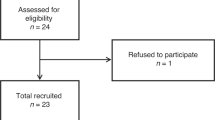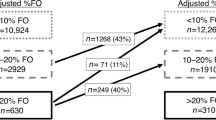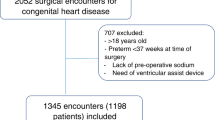Abstract
Hospital-acquired hyponatremia can be lethal. There have been multiple reports of death or permanent neurological impairment in both children and adults. The main factor contributing to the development of hospital-acquired hyponatremia is routine use of hypotonic fluids in patients in whom the excretion of free water, which is retained in response to excess arginine vasopressin (AVP), might be impaired. The practice of administering hypotonic parental fluids was established over 50 years ago, before recognition of the fact that there are numerous potential stimuli for AVP production in most hospitalized patients. Virtually all neurological morbidity resulting from hospital-acquired hyponatremia has been associated with administration of hypotonic fluids. Multiple prospective studies have shown that 0.9% NaCl is effective prophylaxis against hyponatremia. There is not a single report in the literature of neurological complications resulting from the use of 0.9% NaCl in non-neurosurgical patients. Patients at greatest risk of developing hyponatremic encephalopathy following hypotonic fluid administration are children, premenopausal females, postoperative patients, and those with brain injury or infection, pulmonary disease or hypoxemia. When hyponatremic encephalopathy develops, immediate administration of 3% NaCl is essential. In this Review, we discuss the question of why administering hypotonic fluids is unphysiologic and potentially dangerous, the settings in which isotonic fluids should be administered to prevent hyponatremia, and the appropriate treatment of hyponatremic encephalopathy.
Key Points
-
Hospitalized patients have numerous stimuli for arginine vasopressin production and are at risk of developing hyponatremia
-
Routine administration of hypotonic parenteral fluid to hospitalized patients can result in fatal hyponatremic encephalopathy
-
0.9% NaCl (154 mmol/l) should be administered as prophylaxis against hyponatremia, except in the setting of a free water deficit or ongoing free water losses
-
Patients at greatest risk of developing neurological complications secondary to hyponatremia are children, premenopausal females, postoperative patients, and those with brain injury, brain infection or hypoxemia
-
3% NaCl (513 mmol/l) is an essential treatment for hyponatremic encephalopathy
This is a preview of subscription content, access via your institution
Access options
Subscribe to this journal
Receive 12 print issues and online access
$209.00 per year
only $17.42 per issue
Buy this article
- Purchase on Springer Link
- Instant access to full article PDF
Prices may be subject to local taxes which are calculated during checkout

Similar content being viewed by others
References
Moritz ML and Ayus JC (2003) Prevention of hospital-acquired hyponatremia: a case for using isotonic saline. Pediatrics 111: 227–230
Moritz ML and Ayus JC (2004) Hospital-acquired hyponatremia: why are there still deaths? Pediatrics 113: 1395–1396
Moritz ML and Ayus JC (2005) Preventing neurological complications from dysnatremias in children. Pediatr Nephrol 20: 1687–1700
Hawkins RC (2003) Age and gender as risk factors for hyponatremia and hypernatremia. Clin Chim Acta 337: 169–172
Hoorn EJ et al. (2004) Acute hyponatremia related to intravenous fluid administration in hospitalized children: an observational study. Pediatrics 113: 1279–1284
Hatherill M (2004) Rubbing salt in the wound. Arch Dis Child 89: 414–418
Holliday MA et al. (2004) Acute hospital-induced hyponatremia in children: a physiologic approach. J Pediatr 145: 584–587
Moritz ML and Ayus JC (2005) Hospital-induced hyponatremia. J Pediatr 147: 273–274
Friedman AL (2005) Pediatric hydration therapy: historical review and a new approach. Kidney Int 67: 380–388
Moritz ML and Ayus JC (2005) Hypotonic fluids should not be used in volume-depleted children. Kidney Int 68: 409–410
[No authors listed] Postoperative fluid management and hyponatraemia [http://www.ich.ucl.ac.uk/clinserv/anaesthetics/professionals/10postopfluid.html] (accessed 2 May 2007)
Holliday MA et al. (2006) Fluid therapy for children: facts, fashions and questions. Arch Dis Child [doi: 10.1136/adc.2006.106377]
Achinger SG et al. (2006) Dysnatremias: why are patients still dying? South Med J 99: 353–362
Roberts KB (2001) Fluid and electrolytes: parenteral fluid therapy. Pediatr Rev 22: 380–387
Nathens AB and Maier RV (2003) Perioperative fluids and electrolytes. In Essential Practice of Surgery: Basic Science and Clinical Evidence, 29–37 (Ed. Norton JA) Secaucus: Springer-Verlag
Driscoll DF and Bistrian BR (2003) Parenteral and enteral nutrition in the intensive care unit. In Irwin & Rippe's Intensive Care Medicine, edn 5, 2057–2069 (Eds Irwin RS and Rippe JM) Philidelphia: Lippincott Williams & Wilkins
[No authors listed] Postoperative management [http://www.steinergraphics.com/surgical/005_14.7D.html] (accessed 2 May 2007)
Stoneham MD and Hill EL (1997) Variability in post-operative fluid and electrolyte prescription. Br J Clin Pract 51: 82–84
Rassam SS and Counsell DJ (2005) Perioperative fluid therapy. Crit Care Pain 5: 161–165
MacKay G et al. (2006) Randomized clinical trial of the effect of postoperative intravenous fluid restriction on recovery after elective colorectal surgery. Br J Surg 93: 1469–1474
Ferreira da Cunha D et al. (2000) Hyponatremia in acute-phase response syndrome patients in general surgical wards. Am J Nephrol 20: 37–41
Moritz ML and Ayus JC (2006) Case 8-2006: a woman with Crohn's disease and altered mental status. N Engl J Med 354: 2833–2834
Talbot NB et al. (1953) Medical progress; homeostatic limits to safe parenteral fluid therapy. N Engl J Med 248: 1100–1108
Holliday MA and Segar WE (1957) The maintenance need for water in parenteral fluid therapy. Pediatrics 19: 823–832
Gerigk M et al. (1996) Arginine vasopressin and renin in acutely ill children: implication for fluid therapy. Acta Paediatr 85: 550–553
Gerigk M et al. (1993) Clinical settings and vasopressin function in hyponatraemic children. Eur J Pediatr 152: 301–305
Anderson RJ et al. (1985) Hyponatremia: a prospective analysis of its epidemiology and the pathogenetic role of vasopressin. Ann Intern Med 102: 164–168
Gross PA et al. (1987) Pathogenesis of clinical hyponatremia: observations of vasopressin and fluid intake in 100 hyponatremic medical patients. Eur J Clin Invest 17: 123–129
Arieff AI et al. (1992) Hyponatraemia and death or permanent brain damage in healthy children. BMJ 304: 1218–1222
Halberthal M et al. (2001) Lesson of the week: acute hyponatraemia in children admitted to hospital: retrospective analysis of factors contributing to its development and resolution. BMJ 322: 780–782
Armon K et al. (2007) Hyponatraemia and hypokalaemia during intravenous fluid administration. Arch Dis Child [doi: 10.1136/adc.2006.093823]
Coulthard MG et al. (2007) Perioperative fluid therapy in children. Br J Anaesth 98: 146–147
Moritz ML and Ayus JC (2006) Risk factors for death or neurologic impairment from hyponatremic encephalopathy in children in the new millenium. J Am Soc Nephrol 17: 38A
Hanna S et al. (2003) Incidence of hyponatraemia and hyponatraemic seizures in severe respiratory syncytial virus bronchiolitis. Acta Paediatr 92: 430–434
McJunkin JE et al. (2001) La Crosse encephalitis in children. N Engl J Med 344: 801–807
Mehta S et al. (2005) A randomized controlled trial of fluid supplementation in term neonates with severe hyperbilirubinemia. J Pediatr 147: 781–785
Moritz ML and Ayus JC (2006) Re: Randomized controlled trial of fluid supplementation in term neonates with severe hyperbilirubinemia. J Pediatr 149: 581–582
Arieff AI (1986) Hyponatremia, convulsions, respiratory arrest, and permanent brain damage after elective surgery in healthy women. N Engl J Med 314: 1529–1535
Ayus JC et al. (1992) Postoperative hyponatremic encephalopathy in menstruant women. Ann Intern Med 117: 891–897
Ayus JC and Arieff AI (1995) Pulmonary complications of hyponatremic encephalopathy: noncardiogenic pulmonary edema and hypercapnic respiratory failure. Chest 107: 517–521
Chung HM et al. (1986) Postoperative hyponatremia: a prospective study. Arch Intern Med 146: 333–336
Aronson D et al. (2002) Hyponatremia as a complication of cardiac catheterization: a prospective study. Am J Kidney Dis 40: 940–946
Neville KA et al. (2006) Isotonic is better than hypotonic saline for intravenous rehydration of children with gastroenteritis: a prospective randomised study. Arch Dis Child 91: 226–232
Scheingraber S et al. (1999) Rapid saline infusion produces hyperchloremic acidosis in patients undergoing gynecologic surgery. Anesthesiology 90: 1265–1270
McFarlane C and Lee A (1994) A comparison of Plasmalyte 148 and 0.9% saline for intra-operative fluid replacement. Anaesthesia 49: 779–781
Waters JH et al. (2001) Normal saline versus lactated Ringer's solution for intraoperative fluid management in patients undergoing abdominal aortic aneurysm repair: an outcome study. Anesth Analg 93: 817–822
Wilkes NJ et al. (2001) The effects of balanced versus saline-based hetastarch and crystalloid solutions on acid-base and electrolyte status and gastric mucosal perfusion in elderly surgical patients. Anesth Analg 93: 811–816
Boldt J et al. (2002) Are lactated Ringer's solution and normal saline solution equal with regard to coagulation? Anesth Analg 94: 378–384
Takil A et al. (2002) Early postoperative respiratory acidosis after large intravascular volume infusion of lactated Ringer's solution during major spine surgery. Anesth Analg 95: 294–298
Musch W and Decaux G (1998) Treating the syndrome of inappropriate ADH secretion with isotonic saline. QJM 91: 749–753
Moritz ML et al. (2005) Post-operative hyponatremia: a meta-analysis. J Am Soc Nephrol 16: 44A
Steele A et al. (1997) Postoperative hyponatremia despite near-isotonic saline infusion: a phenomenon of desalination. Ann Intern Med 126: 20–25
Asadollahi K et al. (2006) Hyponatraemia as a risk factor for hospital mortality. QJM 99: 877–880
Caramelo C et al. (2002) Regulation of postoperative water excretion: a study on mechanisms. J Am Soc Nephrol 13: 654A
Moritz ML and Ayus JC (2001) La Crosse encephalitis in children. N Engl J Med 345: 148–149
Papadopoulos MC et al. (2002) Aquaporin water channels and brain edema. Mt Sinai J Med 69: 242–248
Torres JM et al. (1998) Streptococcus pneumoniae bacteremia in a community hospital. Chest 113: 387–390
Fine MJ et al. (1997) A prediction rule to identify low-risk patients with community-acquired pneumonia. N Engl J Med 336: 243–250
Ayus JC and Arieff AI (1999) Chronic hyponatremic encephalopathy in postmenopausal women: association of therapies with morbidity and mortality. JAMA 281: 2299–2304
Ayus JC et al. (1987) Treatment of symptomatic hyponatremia and its relation to brain damage: a prospective study. N Engl J Med 317: 1190–1195
Vexler ZS et al. (1994) Hypoxic and ischemic hypoxia exacerbate brain injury associated with metabolic encephalopathy in laboratory animals. J Clin Invest 93: 256–264
Nzerue C et al. (2002) Predictors of mortality with severe hyponatremia. J Am Soc Nephrol 13: A0728
Hoorn EJ et al. (2006) Development of severe hyponatraemia in hospitalized patients: treatment-related risk factors and inadequate management. Nephrol Dial Transplant 21: 70–76
Ayus JC et al. (2006) Hyponatremia with hypoxia: effects on brain adaptation, perfusion, and histology in rodents. Kidney Int 69: 1319–1325
Lee DS et al. (2003) Predicting mortality among patients hospitalized for heart failure: derivation and validation of a clinical model. JAMA 290: 2581–2587
Borroni G et al. (2000) Clinical relevance of hyponatraemia for the hospital outcome of cirrhotic patients. Dig Liver Dis 32: 605–610
Huda MS et al. (2006) Investigation and management of severe hyponatraemia in a hospital setting. Postgrad Med J 82: 216–219
Ayus JC et al. (2005) Hyponatremia in marathon runners. N Engl J Med 353: 427–428
Alam NH et al. (2006) Symptomatic hyponatremia during treatment of dehydrating diarrheal disease with reduced osmolarity oral rehydration solution. JAMA 296: 567–573
Moritz ML (2007) Fluid replacement for severe hyponatremia. JAMA 297: 41–42
Greenberg A and Verbalis JG (2006) Vasopressin receptor antagonists. Kidney Int 69: 2124–2130
Schrier RW et al. (2006) Tolvaptan, a selective oral vasopressin V2-receptor antagonist, for hyponatremia. N Engl J Med 355: 2099–2112
Acknowledgements
We thank Karen Branstetter for her editorial assistance. JC Ayus is supported by NIH grant VO1DK0664A1. Désirée Lie, University of California, Irvine, CA, is the author of and is solely responsible for the content of the learning objectives, questions and answers of the Medscape-accredited continuing medical education activity associated with this article.
Author information
Authors and Affiliations
Corresponding author
Ethics declarations
Competing interests
The authors declare no competing financial interests.
Rights and permissions
About this article
Cite this article
Moritz, M., Ayus, J. Hospital-acquired hyponatremia—why are hypotonic parenteral fluids still being used?. Nat Rev Nephrol 3, 374–382 (2007). https://doi.org/10.1038/ncpneph0526
Received:
Accepted:
Issue Date:
DOI: https://doi.org/10.1038/ncpneph0526
This article is cited by
-
Isotonic versus hypotonic intravenous maintenance fluid therapy: what’s new?
Pediatric Nephrology (2024)
-
Syndrome of inappropriate secretion of antidiuretic hormone following high dose rate brachytherapy for prostate cancer: a case report
BMC Urology (2022)
-
Isotonic versus Hypotonic Intravenous Maintenance Fluids in Children: A Randomized Controlled Trial
The Indian Journal of Pediatrics (2019)
-
The impact of intravenous isotonic and hypotonic maintenance fluid on the risk of delirium in adult postoperative patients: retrospective before-after observational study
Journal of Anesthesia (2019)
-
Efficacy and safety of rapid intermittent correction compared with slow continuous correction with hypertonic saline in patients with moderately severe or severe symptomatic hyponatremia: study protocol for a randomized controlled trial (SALSA trial)
Trials (2017)



